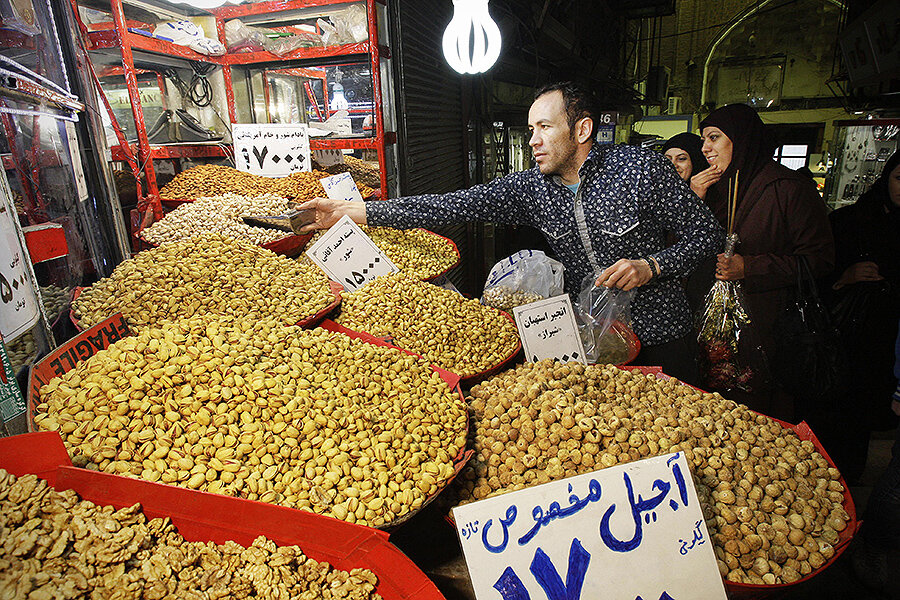Could Iran turn California's pistachio profits to peanuts?
Loading...
With US economic sanctions on Iran lifted, consumers in both countries may soon be able to enjoy far more of each other's top products, from iPods and cosmetics to Persian carpets and pistachios.
For decades, California has dominated the US nuts market, and farmers there have invested even more heavily in the high-profit crop since record droughts hit: as water becomes scarcer, they need to dig deeper groundwater wells. Until the 1980s, though, Persian pistachios were king worldwide (and still dominate, alongside their new American rivals).
Once Americans are reintroduced to Iran's supposedly bigger, "nuttier" version, some aficionados may not come back to the homegrown product, which one connoisseur compared to "cardboard."
Either way, they'll have to pay. Since the original pistachio ban was put in place during the 1979 Iran hostage crisis, their sanction status in the US has varied, but high tariffs have not. There's a 300-percent tax meant to protect American growers from the Iranian government's subsidies for its own farmers (although the tax may be reconsidered as the two countries readjust their trade relationship).
Many industries are thrilled at the prospect of returning to Iran's huge consumer market, one of the largest and wealthiest in the Middle East. Whether officially or smuggled in, American goods from bootlegged movies, to Coca Cola, to even Victoria's Secret (bought indirectly, and advertised with discretion) have warmed Iranians up to Western products.
"Iran is the last, large, untapped emerging market in the world," Ramin Rabii, group chief executive of the Tehran-based financial services group Turquoise Partners told the BBC about one year before Iran signed its historic nuclear agreement last summer.
The enthusiasm is just one element of many Iranians' positive feelings towards the "Great Satan," as leaders have characterized the US — the image of American-Iranian distrust and antagonism that, when it comes to typical citizens, is arguably rather one-sided. Some 84 percent of Americans hold an unfavorable, or very unfavorable, opinion of Iran. Yet despite many Iranians' dim view of the US government, roughly half hold very or somewhat favorable views of Americans themselves.
"In contemporary Tehran, there is anti-Americanism, but appetite for all things American appears greater," the Wall Street Journal summarized in a July report.
If Americans reciprocate with equally friendly appetites, however, California's farmers may be in trouble. A paradoxical "nut rush" has sprouted in the Golden State as farms switch over to pistachios, whose high price helps them build wells to capture scarce water amid a historic, multi-year drought. The oddity: pistachios themselves are some of the thirstiest of crops.
Yet the strategy has taken hold, and California growers pumped out 513 million pounds of the nuts in 2014, tripling their output since 2004, Bloomberg reports, and creating a $1.3 billion crop. But new wells alone can't fend off the dry weather, and the 2015 harvest shrunk to just 275 pounds.
For now, California growers say they're not too worried, especially as long as the tariff holds. Bob Klein, manager of the Fresno-based Administrative Committee for Pistachios, told Bloomberg that Iranian pistachios are more likely to show high levels of aflatoxin, which is caused by fungus, a turn-off for even the most ardent Iranian pistachio fans.
And even if US chefs or snackers do become fond of foreign pistachios, growers are betting that California's varieties can win their own converts abroad.
"This is a global market nowadays," farmer Brian Blackwell Blackwell told NPR. "So if Iran brought a million pounds of pistachios into the United States, that just means there's a million pounds out there somewhere that didn't get sold in China or Europe."








